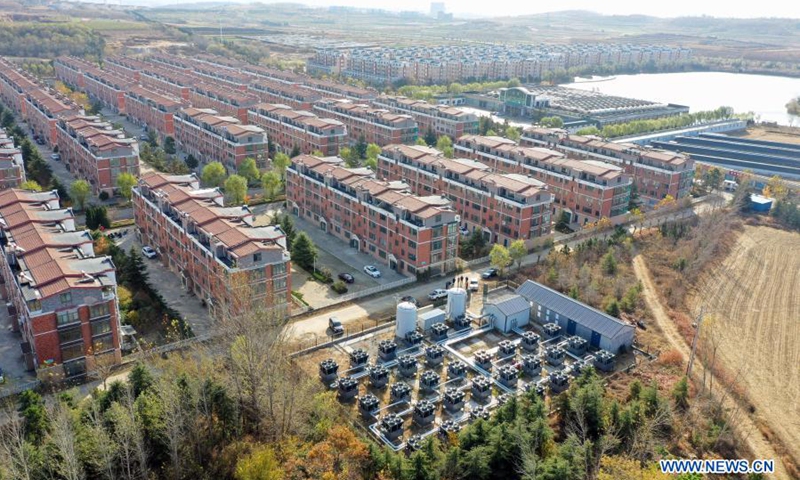JINAN, Dec. 7 (Xinhua) — Despite the winter chill gaining pace in Haiyang City of east China’s Shandong Province, Li Jianmin is unworried thanks to the green heating plants at his home.
“The temperature inside is quite stable, and the heating bill is low,” said Li, a local resident.
On Nov. 9 this year, the city bid farewell to the coal-burning days with the launch of its nuclear heating project, becoming the first Chinese city to have winter heating with zero-carbon emission.
Li Changke, who was once in charge of a 40-tonne heating boiler in the city, is now the director of a nuclear heating and heat exchange station. “We don’t burn coal for heating anymore. We sold the boiler for iron scrap,” he said.
Nuclear heating extracts part of the steam generated by the nuclear power unit as the heat source before conducting multi-stage heat exchange through the heat exchanger, and finally transferring the heat to the consumers, explained Zhao Shouxia, senior engineer with Shandong Nuclear Power Co., Ltd.

Wu Fang, board chairman of the company, said Haiyang nuclear power unit 1 replaced 12 local coal-powered boilers, cutting 180,000 tonnes of carbon dioxide every winter and drastically lowering the heat emitted to the environment, adding that it can effectively improve the local air quality and marine ecology.
Next to the nuclear power station, several heat exchangers are installed with a thermometer pointing to 100 degrees Celsius. The heat exchange equipment converts the high-temperature steam into hot water and transfers it to the heat exchange stations through pipelines.
The nuclear energy heating project has become the world’s largest cogeneration unit after the operation of the second phase of the heating project of 4.5 million square meters, which has replaced 12 local coal-fired water boilers and benefited 200,000 residents in Haiyang, making the city the first “zero carbon” residential heating city in China.
Li Changke said that hot water is required to be at 90 degrees Celsius when reaching the homes of consumers, and the high-quality pipelines ensure the temperature drops no more than 1 to 2 degrees.
Thanks to the new heating system, the heating price for Haiyang residents has dropped from the 22 yuan (about 3.45 U.S. dollars) per square meter to 21 yuan.
Liu Hua, an official with the International Atomic Energy Agency, said the success of Haiyang’s nuclear heating project has proved that this heating method is safe and economical, and will make a greater contribution to the local low-carbon economy.
At present, Haiyang’s nuclear energy heating project is heating 30 million square meters of residential homes in the city. A senior official from the Energy Administration in Shandong said that the province will focus on building a 10-megawatt nuclear power base on the Jiaodong Peninsula and actively promote the comprehensive use of nuclear energy for heating and other purposes.
SOURCES:
Sina, 8th December 2021. http://english.sina.com/china/s/2021-12-08/detail-ikyamrmy7490657.shtml
Global Times, Nov 16, 2021. https://www.globaltimes.cn/page/202111/1239082.shtml?id=11